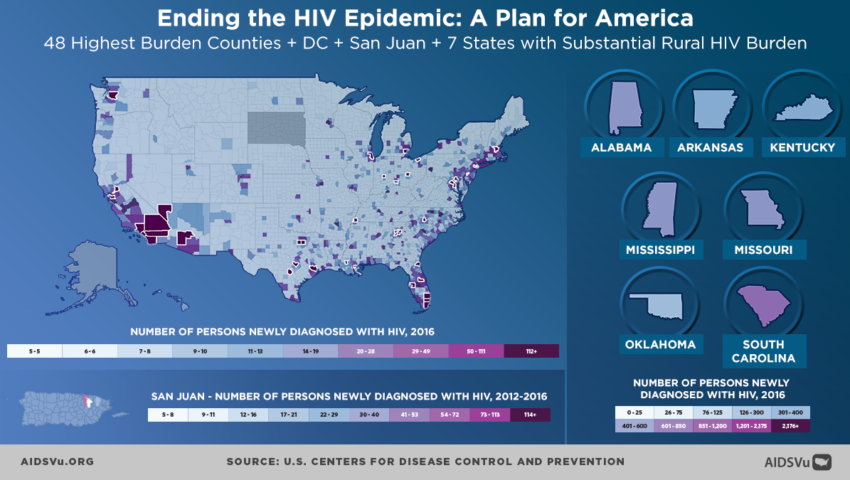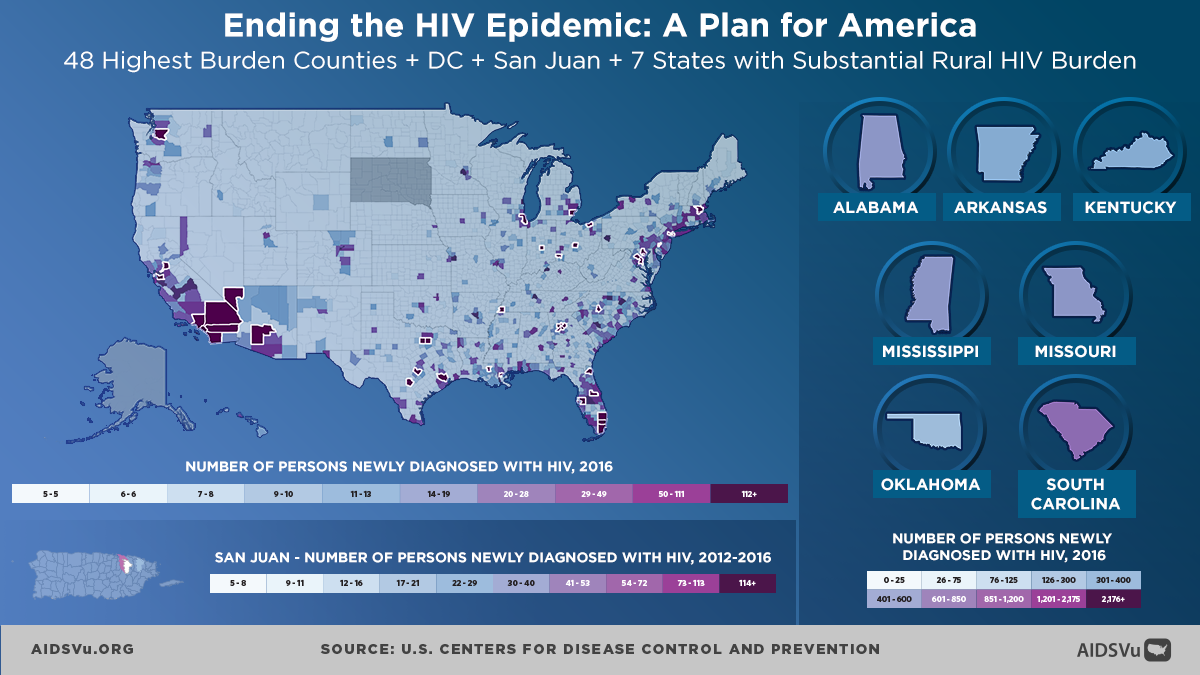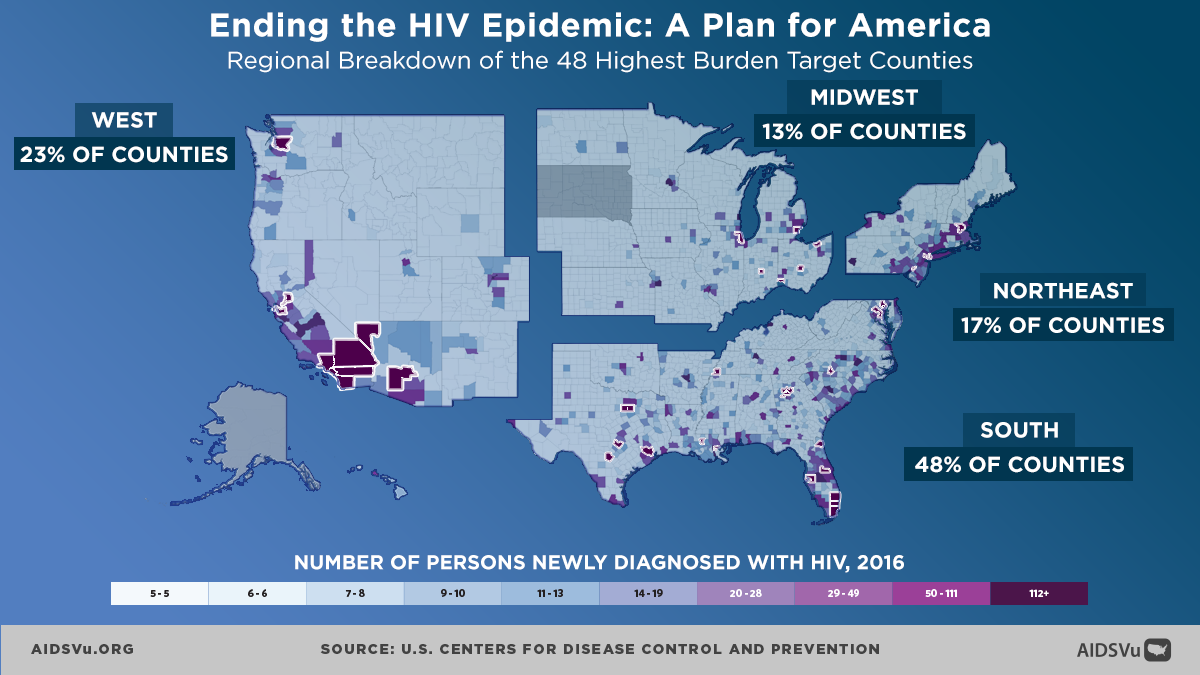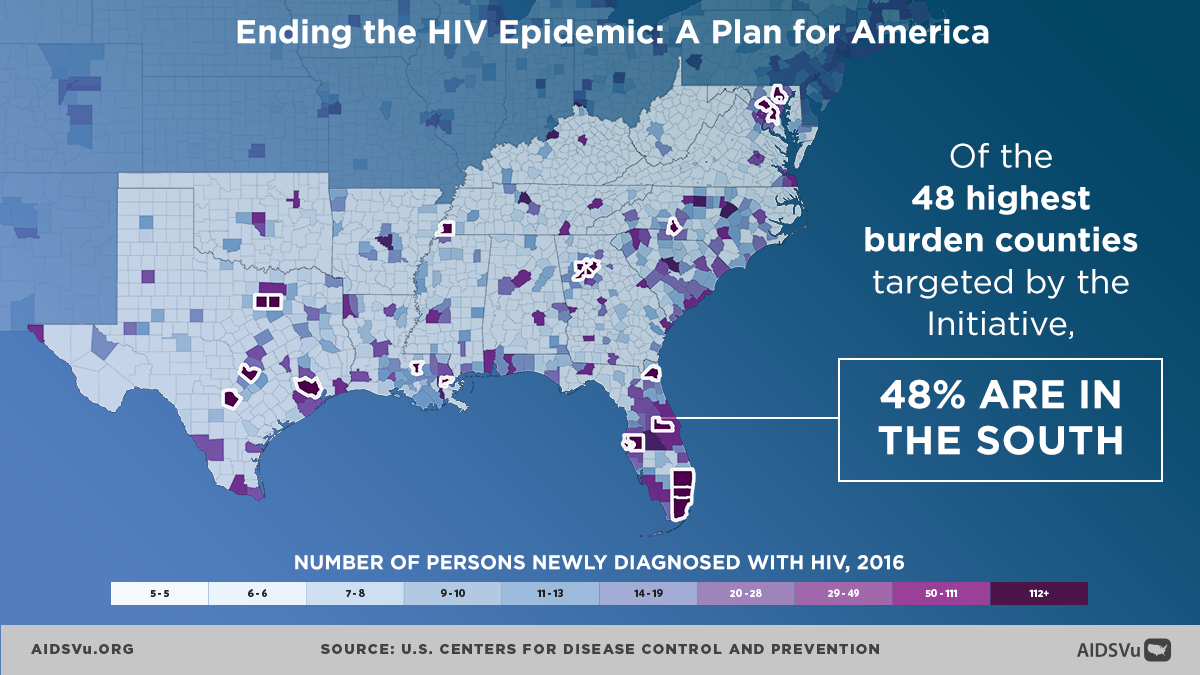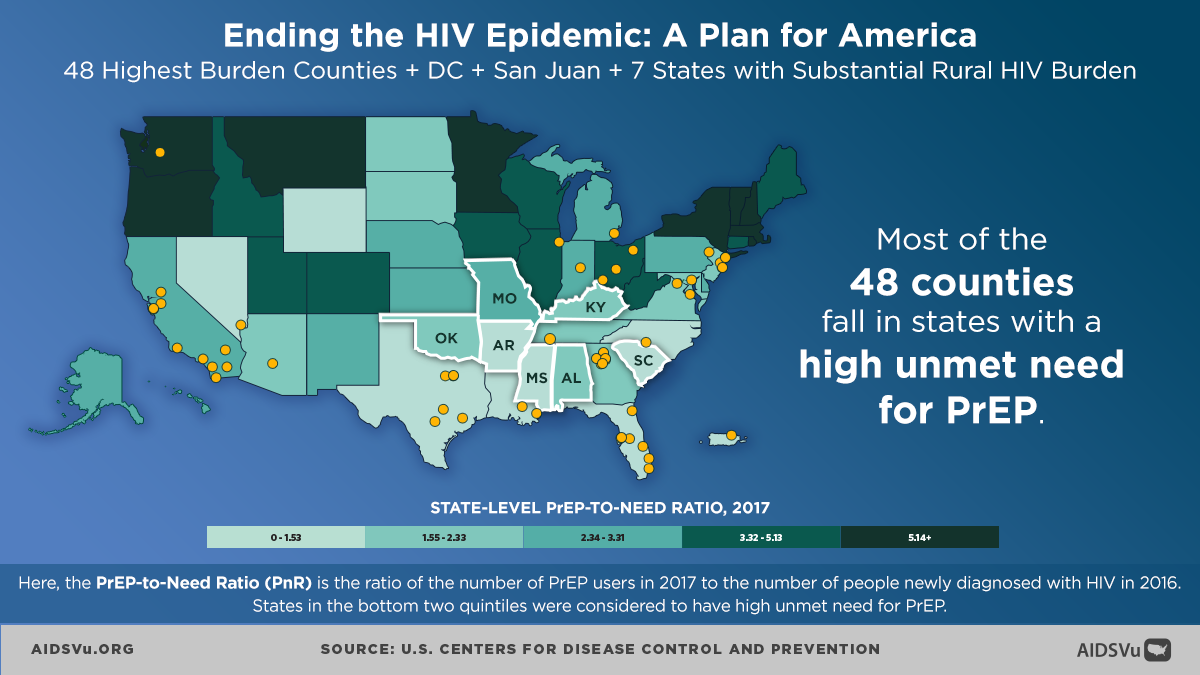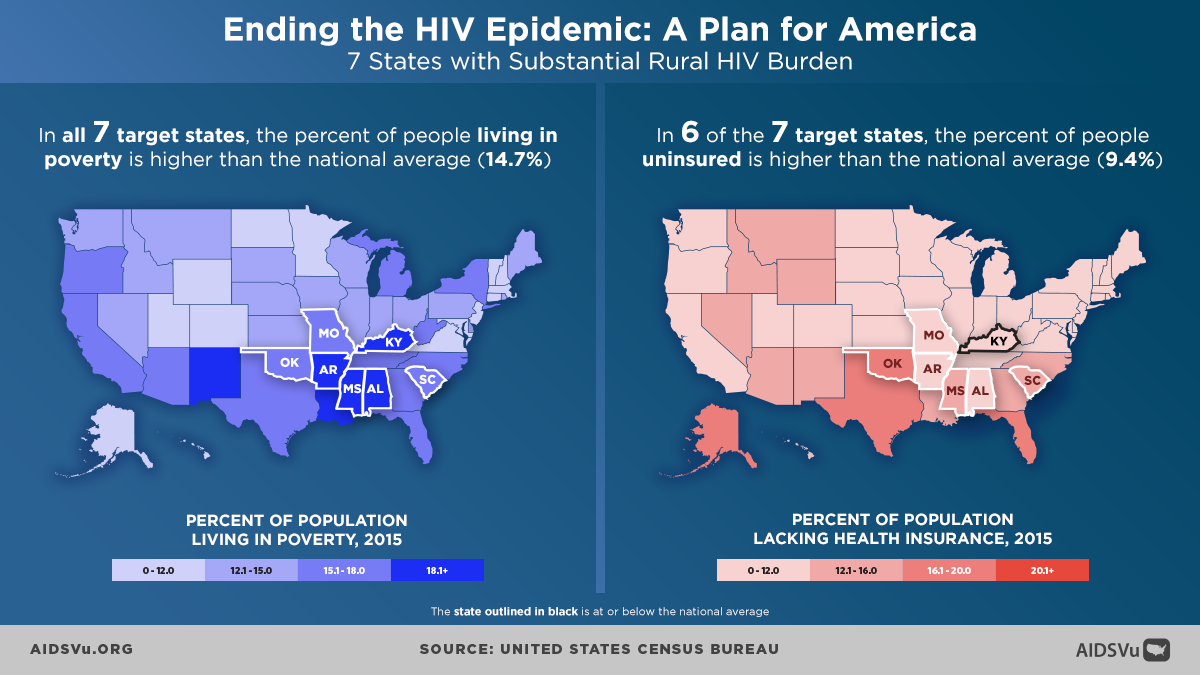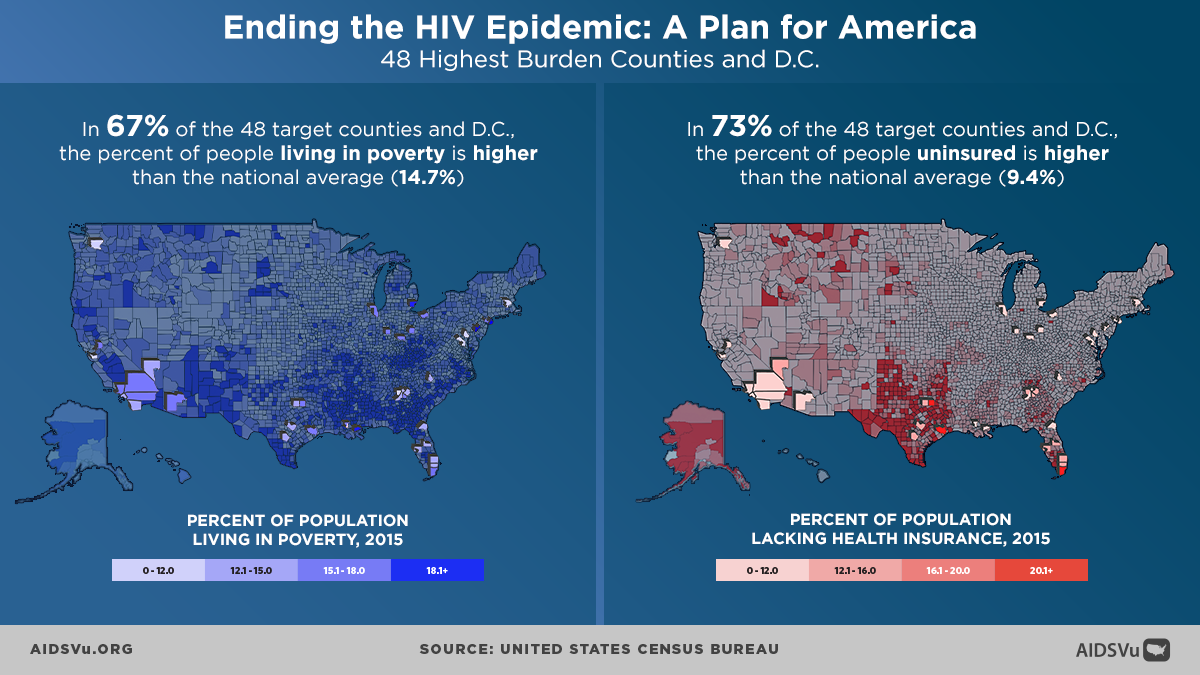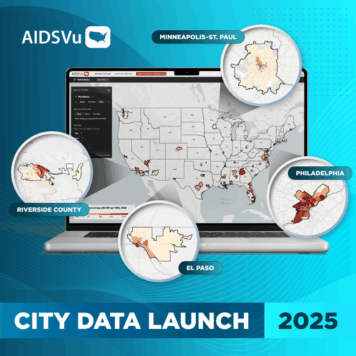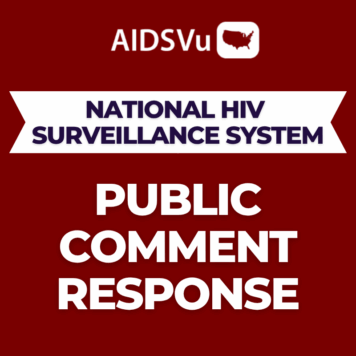Trump’s recently released budget allocated $291 million in funding to primarily be distributed to 48 counties with the highest burden of new HIV diagnoses along with San Juan, Puerto Rico and Washington, D.C. and seven states (Alabama, Arkansas, Kentucky, Mississippi, Missouri, Oklahoma, and South Carolina) with a substantial rural HIV burden.
The initiative has a number of goals. One of these goals is to reduce new HIV diagnoses by 75% by 2025 and by at least 90% by 2030. The initiative is also focused on making existing prevention methods more far-reaching by expanding PrEP use in populations that need it most, including and especially communities of color. The initiative will emphasize the importance of community engagement by setting up planning groups in communities across the targeted jurisdictions. Existing HIV organizations like NMAC are ready to provide support where needed, but ultimately the plan will have to get Congressional approval.
AIDSVu’s analysis shows where The initiative’s resources will be concentrated. Looking at the maps, users can see:
- Of the 48 highest burden counties targeted by the Initiative, 48% are in the South
- In 67% of the 48 target counties and D.C., the percent of people living in poverty is higher than the national average
- Most of the 48 target counties fall in states with a high unmet need for PrEP.
The initiative will involve several government agencies, including Health and Human Services (HHS), Centers for Disease Control and Prevention (CDC), National Institutes of Health (NIH), Health Resources and Services Administration (HRSA), and the Indian Health Service (IHS). HHS officials involved in the plan’s creation stated in a recent JAMA article that “The President’s budget will ask Republicans and Democrats to make the needed commitment to support a concrete plan to achieve this goal,” characterizing the plan as a bipartisan effort. The need for bipartisan support is clear when you visualize the seven states and 48 counties. Although the seven states are clustered in the South and Midwest, the counties represent each region of the country and include Washington, D.C. and the U.S. territory of Puerto Rico as well.
HHS has released a guide to The initiative’s plan, Ending the HIV Epidemic: A Plan for America. Their guide outlines the four key strategies the plan will utilize to reach its goals: Diagnose, Treat, Protect, and Respond. This plan aims to:
- Diagnose all individuals with HIV as early as possible after infection;
- Treat the infection rapidly and effectively after diagnosis, achieving sustained viral suppression;
- Protect individuals at risk for HIV using proven prevention approaches; and
- Respond rapidly to detect and respond to growing HIV clusters and prevent new HIV infections.
View AIDSVu’s interactive maps to learn more about HIV in the 48 counties and seven states, as well San Juan, Puerto Rico and Washington, D.C.

